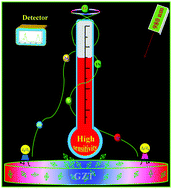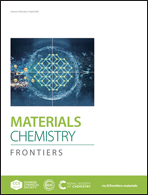A universal strategy to enhance the absolute sensitivity for temperature detection in bright Er3+/Yb3+ doped double perovskite Gd2ZnTiO6 phosphors†
Abstract
The absolute sensitivity as a crucial parameter in temperature detection applications is affected by the fluorescence intensity ratio (FIR) of thermally coupled levels (TCLs), whereas no universal research on the utilization of the FIR effect has been performed to rationally achieve high absolute sensitivity. Herein, a universal strategy on the manipulation of the FIR effect is put forward for the first time. In the Er3+-activated Gd2ZnTiO6 (GZT) system, the maximum absolute sensitivity of 218.8 × 10−4 K−1 at 313 K is obtained based on this strategy in the 2H11/2–4S3/2 group, which is enhanced by a factor of 4.6 relative to its original maximum absolute sensitivity. Provably, the maximum absolute sensitivity of 398.7 × 10−4 K−1 at 313 K in the 2H11/2–4S3/2 group is gained in the Er3+-activated NaYF4 material, which is enhanced by a factor of 12.3. Such high absolute sensitivity is unprecedented in fluoride upconversion (UC) materials. Besides, high sensitivity and excellent UC emissions suggest that the Er3+-activated GZT material may be a candidate for temperature detection. This work offers a universal strategy to enhance the absolute sensitivity and maintain the relative sensitivity and opens a new perspective for the development of temperature detection.



 Please wait while we load your content...
Please wait while we load your content...